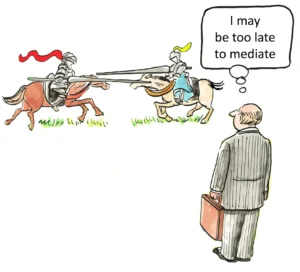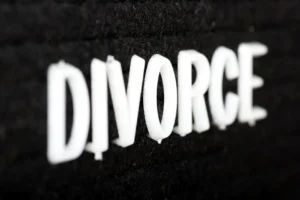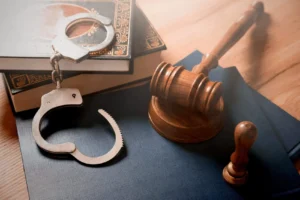Witness Tampering: Serious Consequences for Obstruction
In the realm of criminal justice, few actions are as detrimental to the pursuit of truth and fairness as witness tampering. This insidious practice undermines the very foundations of our legal system, threatening the integrity of court proceedings and obstructing the path to justice. Witness tampering occurs when an individual attempts to influence, prevent, or alter the testimony of a witness in a legal proceeding through various means such as intimidation, bribery, or coercion.
The consequences of witness tampering are far-reaching and severe, impacting not only the immediate case at hand but also eroding public trust in the judicial process. As such, both federal and state laws have been enacted to combat this serious offense, imposing harsh penalties on those who engage in such behavior. Understanding the nature of witness tampering, its legal implications, and the potential consequences is crucial for maintaining the sanctity of our justice system and ensuring that truth prevails in our courtrooms.
Understanding Witness Tampering
Witness tampering is a form of obstruction of justice that involves interfering with a witness’s testimony or cooperation in a legal proceeding. This interference can take many forms, ranging from subtle persuasion to outright threats or violence. The key element of witness tampering is the intent to influence or prevent testimony, regardless of whether the attempt is successful.
Forms of Witness Tampering
Witness tampering can manifest in various ways, including:
- Intimidation: Using threats or fear to discourage a witness from testifying or to alter their testimony.
- Bribery: Offering money or other benefits in exchange for false testimony or withholding information.
- Harassment: Persistently bothering or pressuring a witness to influence their cooperation or testimony.
- Physical force: Using violence or the threat of violence against a witness or their loved ones.
- Coercion: Forcing a witness to act against their will through threats or manipulation.
- Persuasion: Attempting to convince a witness to change their testimony or withhold information.
It’s important to note that witness tampering doesn’t only apply to courtroom witnesses. The term “witness” in this context can include victims, informants, or anyone with information relevant to a legal proceeding or investigation.
Legal Definition and Scope
Under federal law, specifically 18 U.S.C. § 1512, witness tampering is broadly defined to cover a wide range of behaviors that interfere with the administration of justice. This statute applies not only to ongoing court cases but also to potential future proceedings and investigations.
The law prohibits knowingly using intimidation, threats, corrupt persuasion, or misleading conduct toward another person with the intent to:
- Influence, delay, or prevent testimony in an official proceeding
- Cause or induce any person to withhold testimony or documents from an official proceeding
- Hinder, delay, or prevent the communication of information to law enforcement officers or judges relating to the commission of a federal offense
Importantly, the law doesn’t require that an official proceeding be pending or about to be instituted at the time of the offense. It’s enough that the defendant believes that such a proceeding might occur in the future.
The Serious Nature of Witness Tampering
Witness tampering is considered a grave offense because it strikes at the heart of the justice system. The ability to present truthful testimony and evidence is fundamental to fair trials and the rule of law. When witnesses are tampered with, it can lead to miscarriages of justice, wrongful convictions, or guilty parties escaping punishment.
Impact on the Justice System
The effects of witness tampering extend far beyond individual cases. Some of the broader impacts include:
- Undermining truth-seeking: The primary goal of any legal proceeding is to uncover the truth. Witness tampering directly interferes with this objective by distorting or suppressing evidence.
- Eroding public trust: When people perceive that the justice system can be manipulated through witness tampering, it erodes public confidence in the legal process.
- Compromising fair trials: Tampering can deprive defendants of their right to a fair trial by altering the evidence presented against them.
- Endangering witnesses: Attempts to tamper with witnesses can put them and their families at risk, potentially discouraging future witnesses from coming forward.
- Obstructing investigations: In addition to affecting court proceedings, tampering can hinder law enforcement investigations, making it harder to solve crimes.
Psychological Impact on Witnesses
The psychological toll of witness tampering on the individuals targeted should not be underestimated. Witnesses who experience intimidation or threats may suffer from:
- Anxiety and fear for their safety and that of their loved ones
- Guilt or moral distress if they succumb to pressure to alter their testimony
- Post-traumatic stress disorder (PTSD) from threats or acts of violence
- Loss of faith in the justice system and societal institutions
These psychological impacts can have long-lasting effects on witnesses, potentially affecting their willingness to participate in future legal proceedings or report crimes.
Legal Consequences of Witness Tampering
Given the serious nature of witness tampering, the legal system imposes severe penalties on those found guilty of this offense. The consequences can vary depending on the jurisdiction, the specific circumstances of the case, and the methods used to tamper with witnesses.
Federal Penalties
Under federal law, witness tampering is treated as a serious felony. The penalties prescribed by 18 U.S.C. § 1512 include:
- Up to 20 years in prison for using force, threats, or corrupt persuasion to influence testimony
- Up to 10 years in prison for harassment that hinders, delays, or prevents testimony
- Up to 3 years in prison for harassing conduct that obstructs, delays, or prevents the communication of information to law enforcement
In cases where the tampering involves attempted murder or results in the death of a witness, the penalties can be even more severe, including life imprisonment or the death penalty.
State Penalties
While federal law provides a baseline for witness tampering offenses, many states have their own statutes with varying penalties. For example:
- In California, witness tampering can result in up to four years in state prison and a fine of up to $10,000.
- In New York, tampering with a witness in the first degree (involving the use of violence) is a class B felony punishable by up to 25 years in prison.
- In Texas, witness tampering is typically a third-degree felony, carrying a sentence of 2 to 10 years in prison and a fine of up to $10,000.
Additional Consequences
Beyond prison time and fines, those convicted of witness tampering may face other significant consequences:
- Probation or supervised release: After serving a prison sentence, offenders may be subject to a period of probation or supervised release.
- Restitution: Courts may order offenders to pay restitution to victims for any financial losses resulting from the tampering.
- Loss of professional licenses: Conviction can lead to the revocation of professional licenses, particularly in fields that require public trust.
- Immigration consequences: For non-citizens, a witness tampering conviction can lead to deportation or ineligibility for citizenship.
- Enhanced penalties for related crimes: If the tampering is connected to another offense, it can lead to enhanced penalties for that crime as well.
- Civil liability: In addition to criminal penalties, offenders may face civil lawsuits from victims seeking damages.
Prosecuting Witness Tampering Cases
Prosecuting witness tampering cases presents unique challenges due to the nature of the offense. Prosecutors must navigate complex legal and evidentiary issues while also ensuring the safety and cooperation of witnesses who may have been intimidated or threatened.
Elements of the Offense
To secure a conviction for witness tampering, prosecutors typically need to prove several key elements:
- Intent: The defendant must have acted with the specific intent to influence, delay, or prevent testimony or communication with law enforcement.
- Knowledge: The defendant must have known or believed that the person they were attempting to influence was a witness or potential witness.
- Act: There must be evidence of an overt act of tampering, such as threats, bribery, or harassment.
- Nexus to an official proceeding: While an official proceeding doesn’t need to be pending, there must be a connection between the tampering and an actual or potential legal proceeding.
Gathering Evidence
Collecting evidence for witness tampering cases can be challenging, often requiring a combination of:
- Witness testimony
- Physical evidence (e.g., threatening letters, recordings of phone calls)
- Electronic evidence (e.g., text messages, emails, social media posts)
- Surveillance footage
- Financial records (in cases of bribery)
Prosecutors may also use undercover operations or cooperating witnesses to gather evidence of tampering attempts.
Witness Protection
Ensuring the safety and cooperation of witnesses is paramount in these cases. Prosecutors may work with law enforcement to implement witness protection measures, which can include:
- Temporary relocation
- 24-hour security
- New identities in extreme cases
- Confidentiality agreements to protect witness information
Challenges in Prosecution
Some of the common challenges in prosecuting witness tampering cases include:
- Reluctant witnesses: Witnesses who have been successfully intimidated may be unwilling to testify about the tampering.
- Proving intent: Demonstrating that the defendant specifically intended to influence testimony can be difficult, especially in cases of subtle persuasion.
- Distinguishing legitimate contact: In some cases, it can be challenging to differentiate between legitimate attempts to prepare a witness and improper influence.
- Hearsay issues: Evidence of tampering often involves out-of-court statements, which may face hearsay objections.
- Balancing disclosure and protection: Prosecutors must balance their obligation to disclose evidence to the defense with the need to protect witnesses’ identities and safety.
Prevention and Deterrence
Preventing witness tampering is crucial for maintaining the integrity of the justice system. Various strategies are employed to deter potential offenders and protect witnesses:
Legal Deterrents
The severe penalties associated with witness tampering serve as a primary deterrent. Public awareness campaigns about these penalties can help reinforce the message that tampering will not be tolerated.
Witness Protection Programs
Formal witness protection programs, both at the federal and state levels, provide a powerful tool for ensuring witness safety and encouraging cooperation. These programs can offer:
- Physical protection
- Relocation assistance
- Financial support
- New identities in extreme cases
Courtroom Procedures
Courts have implemented various procedures to protect witnesses and deter tampering:
- Allowing witnesses to testify anonymously or behind screens
- Closing courtrooms to the public during sensitive testimony
- Permitting video testimony to avoid in-person confrontations
Technology and Surveillance
Advancements in technology have provided new tools for preventing and detecting witness tampering:
- Electronic monitoring of defendants and known associates
- Enhanced communication systems for witnesses to report threats quickly
- Data analysis to identify patterns of potential tampering attempts
Education and Training
Educating legal professionals, law enforcement, and the public about witness tampering can help in its prevention:
- Training programs for prosecutors and police on recognizing signs of tampering
- Public awareness campaigns to encourage reporting of tampering attempts
- Education for witnesses about their rights and available protections
Ethical Considerations
The issue of witness tampering raises several ethical considerations for legal professionals and society at large:
Attorney Ethics
Lawyers must navigate a fine line between zealous advocacy and improper influence:
- Attorneys are prohibited from instructing or encouraging witnesses to testify falsely
- There are strict rules governing how attorneys can prepare witnesses for testimony
- Lawyers who become aware of client attempts to tamper with witnesses may face ethical dilemmas regarding their duty of confidentiality versus their obligation to the court
Balancing Rights
The legal system must balance the rights of defendants with the need to protect witnesses:
- Defendants have a constitutional right to confront witnesses against them
- Witness protection measures must be carefully implemented to avoid infringing on defendants’ rights
- The presumption of innocence must be maintained even as steps are taken to prevent tampering
Media and Public Discourse
The media and public discussion of ongoing cases can inadvertently influence witnesses:
- Extensive media coverage can put pressure on witnesses to alter their testimony
- Public commentary on social media platforms can reach witnesses and affect their willingness to testify
- Ethical journalism practices are crucial in reporting on cases without compromising witness integrity
Whistleblower Protections
The concept of witness tampering intersects with whistleblower protections:
- Whistleblowers who report corporate or government wrongdoing are often vulnerable to retaliation
- Strong legal protections for whistleblowers are essential to encourage reporting of misconduct
- The line between legitimate corporate investigations and witness tampering can sometimes be blurry
International Perspectives
Witness tampering is not unique to any one country; it’s a global concern that affects justice systems worldwide. Different nations have developed various approaches to combat this issue:
United Nations Convention Against Corruption
The UN Convention Against Corruption, ratified by 187 countries, includes provisions for witness protection and criminalization of obstruction of justice, including witness tampering.
European Union
The EU has directives in place to protect victims and witnesses in criminal proceedings, including measures to prevent intimidation and retaliation.
Challenges in International Cases
Cross-border witness tampering presents unique challenges:
- Jurisdictional issues when tampering occurs across national boundaries
- Differences in legal definitions and penalties between countries
- Challenges in extradition for witness tampering offenses
International Criminal Court (ICC)
The ICC has specific provisions for witness protection and penalties for offenses against the administration of justice, including witness tampering.
Technological Advancements and Witness Tampering
As technology evolves, so do the methods of witness tampering and the tools to combat it:
Social Media and Online Intimidation
Social media platforms have become new venues for witness intimidation:
- Threats or intimidating messages sent through social media
- Posting of personal information about witnesses online (doxxing)
- Use of fake accounts to harass or mislead witnesses
Cybersecurity Measures
Enhanced cybersecurity is crucial for protecting witness information:
- Secure communication channels for witnesses to interact with law enforcement
- Encryption of witness data and testimony
- Digital forensics to trace online tampering attempts
Blockchain and Immutable Records
Emerging technologies like blockchain offer potential solutions:
- Creating tamper-proof records of witness statements
- Verifying the authenticity of digital evidence
- Tracking chain of custody for evidence more securely
Artificial Intelligence in Detection
AI and machine learning are being explored for their potential in detecting witness tampering:
- Analyzing communication patterns to identify potential tampering attempts
- Monitoring social media for threats against witnesses
- Assisting in the analysis of large volumes of data in complex cases
Case Studies and Notable Incidents
Examining high-profile cases of witness tampering provides insight into the severity and complexity of this offense:
United States v. Stone (2019)
Roger Stone, a former advisor to President Trump, was convicted of witness tampering among other charges. He was found to have attempted to influence the testimony of radio host Randy Credico regarding communications with WikiLeaks.
Whitey Bulger Case
Notorious Boston gangster James “Whitey” Bulger was charged with 19 counts of murder and multiple counts of witness intimidation. His case highlighted the extreme measures some criminals will take to silence witnesses.
Martha Stewart Case (2004)
While not directly charged with witness tampering, Martha Stewart’s conviction for lying to investigators about a stock sale raised questions about the line between witness preparation and improper influence.
These cases demonstrate the varied contexts in which witness tampering can occur, from political scandals to organized crime, and highlight the serious consequences for those convicted of this offense.
Future Trends and Challenges
As society and technology continue to evolve, the landscape of witness tampering and the efforts to combat it will likely face new challenges and opportunities:
Virtual Court Proceedings
The increasing use of virtual court proceedings, accelerated by the COVID-19 pandemic, presents new challenges for witness protection:
- Ensuring the security of online testimony
- Preventing digital intimidation during virtual hearings
- Maintaining the solemnity and integrity of court proceedings in a virtual environment
Deepfake Technology
The emergence of deepfake technology poses a potential threat to witness testimony:
- Creation of fake video or audio evidence to discredit witnesses
- Use of AI-generated content to intimidate or mislead witnesses
- Challenges in authenticating digital evidence in court
Global Cooperation
As criminal activities become increasingly transnational, there’s a growing need for international cooperation in combating witness tampering:
- Development of cross-border witness protection programs
- Harmonization of laws and penalties for witness tampering across jurisdictions
- Enhanced information sharing between law enforcement agencies worldwide
Privacy Concerns
Balancing witness protection with privacy rights will continue to be a challenge:
- Protecting witness identities in an age of ubiquitous data
- Addressing concerns about government surveillance in witness protection programs
- Navigating the tension between transparency in legal proceedings and witness safety
Psychological Support for Witnesses
There’s an increasing recognition of the need for comprehensive psychological support for witnesses:
- Development of long-term mental health programs for protected witnesses
- Integration of trauma-informed practices in witness management
- Research into the long-term psychological effects of witness tampering and protection programs
- Training for legal professionals in recognizing and addressing the mental health needs of witnesses
Psychological Support for Witnesses (continued)
- Research into the long-term psychological effects of witness tampering and protection programs
- Training for legal professionals in recognizing and addressing the mental health needs of witnesses
Conclusion
Witness tampering remains a significant threat to the integrity of the justice system, with far-reaching consequences that extend beyond individual cases. As we’ve explored throughout this article, the serious nature of this offense is reflected in the severe legal penalties and the comprehensive efforts to prevent and prosecute such acts.
The multifaceted approach to combating witness tampering involves stringent laws, robust prosecution strategies, advanced protection programs, and ongoing efforts to adapt to new challenges posed by technological advancements and evolving criminal tactics. The ethical considerations surrounding witness tampering continue to shape legal practices and public discourse, emphasizing the delicate balance between protecting witnesses and maintaining the rights of the accused.
As we look to the future, it’s clear that addressing witness tampering will require continued vigilance, innovation, and cooperation across various sectors of the legal system and society at large. The development of new technologies offers both challenges and opportunities in this fight, necessitating ongoing adaptation of legal frameworks and protection strategies.
Ultimately, the fight against witness tampering is crucial for maintaining public trust in the legal system and ensuring that justice can be served fairly and impartially. By understanding the nature of this offense, its consequences, and the methods used to combat it, we can better appreciate the complexities involved in safeguarding the integrity of legal proceedings and the vital role that witnesses play in the pursuit of justice.
As society continues to evolve, so too must our approaches to preventing and prosecuting witness tampering. Only through continued dedication to this cause can we hope to preserve the fundamental principles of truth and justice upon which our legal system is built.
Citations:
https://study.com/academy/lesson/witness-tampering-definition-laws-examples.html
https://www.vintti.com/blog/witness-tampering-legal-concept-explained
https://www.nbcnews.com/news/us-news/tyre-nichols-death-police-officers-verdict-memphis-rcna173515
https://www.mololamken.com/knowledge-what-is-witness-tampering
https://www.federalcriminaldefenseadvocates.com/tampering-with-witness
https://www.federallawyers.com/18-u-s-c-%C2%A7-1512-witness-tampering/
https://www.federallawyers.com/what-happens-if-i-tamper-with-a-witness/


















